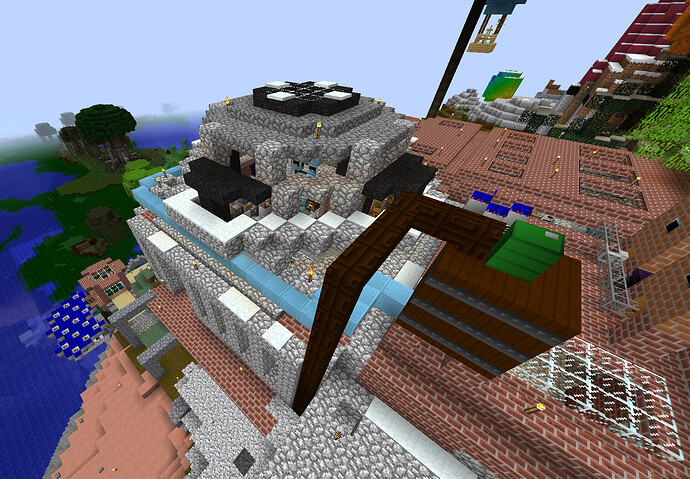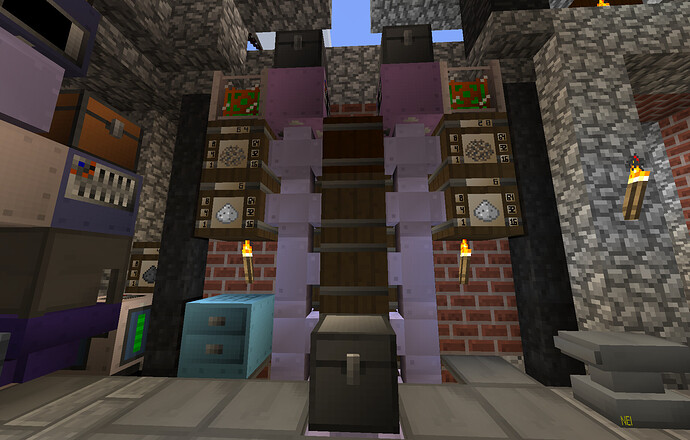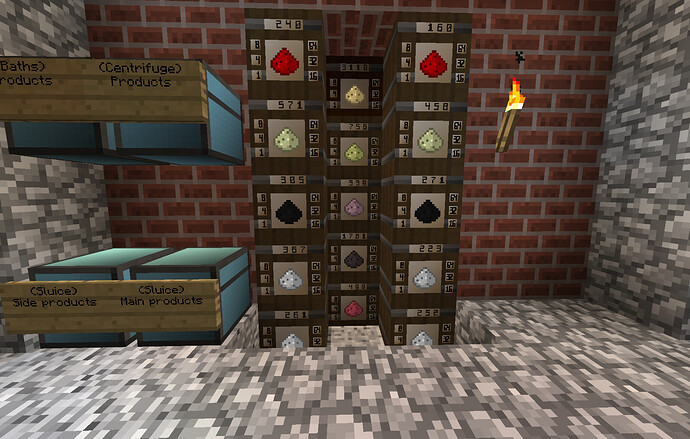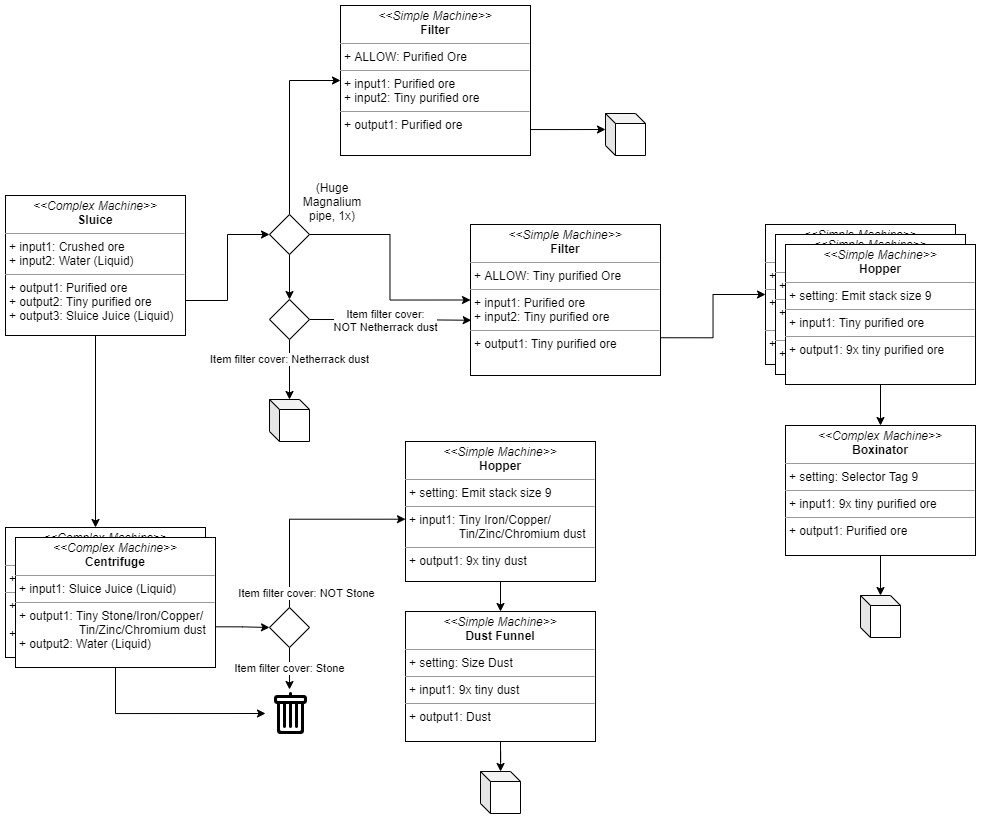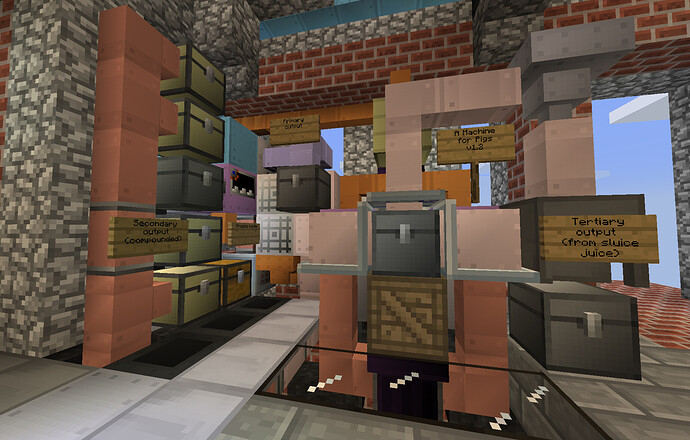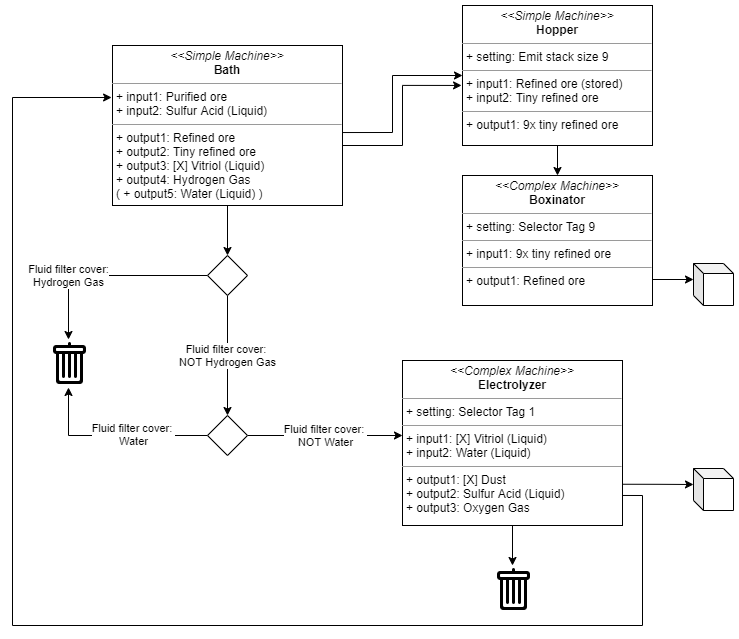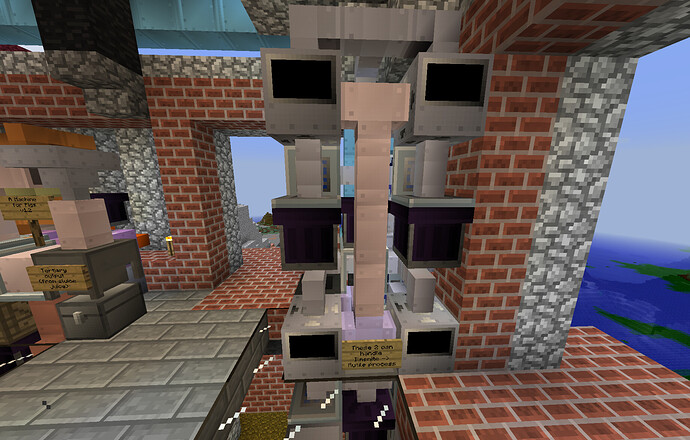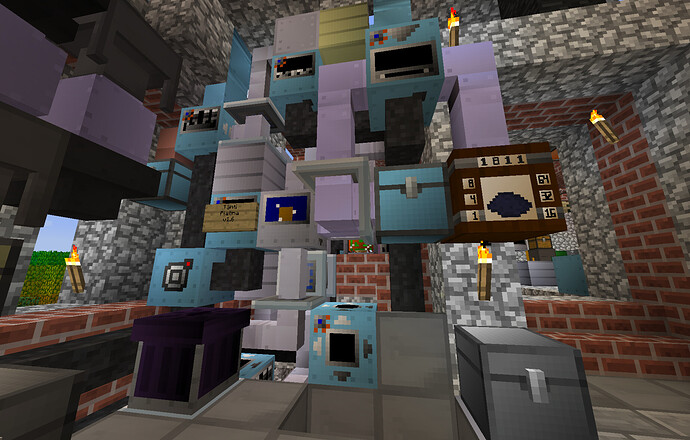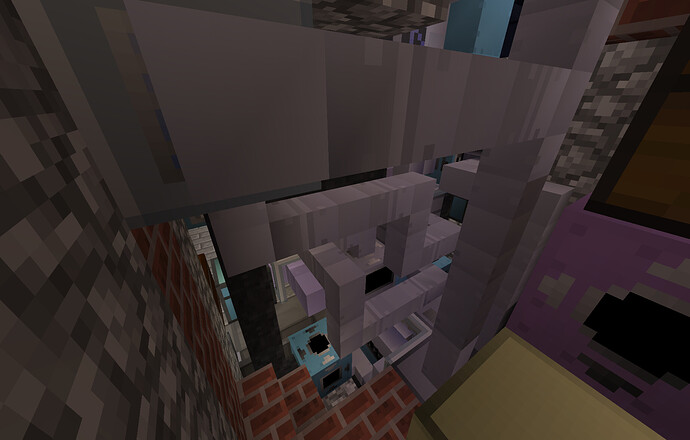Hello there, back with another set of pictures. This time, we’ll go through ore processing and refining. Most of the processes explained in the earlier material automation post are possible because of these setups. Ore processing is the main gameplay loop within GT6, so best to get these going early!
Ore processing has many steps where you are going to need a lot of water, mainly Sluice and Bath processes. To accommodate with this, we constructed a pumping station and cheap pipeline to the “Wood Tank” multiblock used as water buffer. Later when aluminium became more abundant much stronger pipeline circling the Thunderdome was created.
- Crusher setup
This is the simplest and most important phase of ore processing, as crushing ores DOUBLE the materials you get from single ore block. 2x Crushers at top, followed by lines of item pipes and ending in a single chest. Most important part of this design is item barrels connected to pipes: GT6 tries to insert items into first acceptable inventory, and if Limestone dust barrel is found before the chest all limestone dust will be inserted in it. This is a great way to lessen the inventory sorting load.
- Ore washing setup
Now we are getting somewhere. Crushed ores should be processed into purified ores, as this nets you a lot of byproducts and more yields from the base ore. This was the most complex setup so far, requiring extensive use of filters, buffers and covers. Our thinking was from the beginning to process everything we can if we can, and this means Sluice Juice processing on-the-spot.
This design has one shortfall, as the hoppers used to buffer small refined ores do not work as we initially visioned. When hopper gets 9th item, it outputs all of them and leaves the space within empty. This periodically causes three tungsten hoppers to fill up, and we must manually sort them to remove the clog. If we could find a way to leave the last item into the hopper (reserving the spot) the setup would be fully automatic.
- Baths
Crushed to purified ore is a no-brain progression, but after this it becomes more complicated. Bathing with acids, centrifuging for tiny refined ores, roasting and shifting are all viable routes to go for. We found out that bathing with acids is the most proficient route in most cases, often doubling the yields compared to only shredding the stuff into dusts.
As seen from the version number, this setup went through a lot of modifications. We in the end settled for 4x baths with bottom two supporting Ilmenite → Rutile refining. This required few extra covers and checks, but was a massive help for making Titanium production more simplified.
- Centrifuging, Roasting and Magnetic separation
These three are often end-of-the-line setups, afterwards with only remaining step being to shred the ores into dusts. Most helpful setup was the roaster piping on the right, as it allows you to roast multiple different materials with large variety of outputs (small piles, 1/72nd of a pile, tiny piles). Process goes as follows:
Roasting oven → Hopper stack size 18 output → Dust funnel (small dusts) → Hopper stack size 4 output → Dust funnel (dusts). These steps allow you to mix small/tiny/1/72nd sizes and get full dusts inserted into chest. This saves a lot of micro in the long run.
Centrifuging, Roasting and Magnetic separation
Magnetic separator on the bottom, centrifuge setup of the left and roasting oven setup on the right.
- Platinum refining
Oh boy, now we are in the deep end. Platinum refinement is one of the most complex processes available in GT6 (before going nuclear). This one took at least an hour of thinking and experimenting before correct items were in the right places. Trying to put everything within this corner didn’t help, but we managed. Behold, something I don’t want to re-create soon.
Platinum refinement is a tough one also in other way, as the Nitrogen Monoxide has to be created through Lighting Processor (and Nitrogen itself provided out-of-the-loop). We “fixed” the problem as we often do: made a large buffer drum with niceties in it, and output from it it when needed. Works and has worked good enough for semi-automation.
There still exists some niche methods, and we didn’t include the last phase part of most refined ore production (Shredder). I think this is a good time to stop, as processes described before have served us well into nuclear era.
As a sneak-peak, here’s first conventional energy production method we used: Potato-powered bio-diesel setup. This was the first but not the last automated power generation setup we made…
